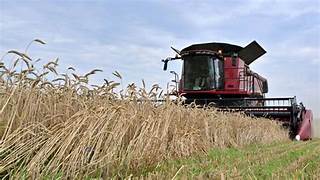Published on: July 29, 2023

Food Crises (GRFC) 2023
Food Crises (GRFC) 2023

- The recently released Global Report on the Food Crises (GRFC) 2023 has shed light on the persistent issue of hunger worldwide. Despite two years of the pandemic, the report reveals that food insecurity levels in 2022 remained significantly higher than pre-pandemic levels in 2019.
- The GRFC is produced by the Food Security Information Network in support of the Global Network against Food Crises, and involves 16 partners to achieve a joint consensus-based assessment of acute food insecurity in countries
- The key drivers of food insecurity include the pandemic’s economic impact, conflicts like the war in Ukraine, soaring food prices, and agricultural input shortages.
- The report cautions that while hunger is no longer escalating at an alarming rate globally, it remains far from achieving Sustainable Development Goal 2 – Zero Hunger.
Extent of Hunger in 2022:
- According to the GRFC 2023, an alarming estimate of 691 million to 783 million people suffered from hunger in 2022. This figure represents 2.4 billion individuals without adequate access to food, marking a staggering increase of 391 million people compared to 2019. The prevalence of undernourishment remained unchanged from 2021 to 2022, affecting around 9.2% of the global population, up from 7.9% in 2019.
Child Nutrition Trends:
- The report highlights some positive trends in child nutrition, such as the decline in stunting among children under five years of age from 204.2 million in 2000 to 148.1 million in 2022. Child wasting also showed improvement, reducing from 54.1 million in 2000 to 45 million in 2022. However, the study indicated a non-significant increase in the number of overweight or obese children from 5.3% (33 million) in 2000 to 5.6% (37 million) in 2022.
Understanding Food Security:
- Food security, as defined by the World Food Summit of 1996, means that all people, at all times, have physical and economic access to sufficient, safe, and nutritious food that meets their dietary needs and preferences for an active and healthy life. The prevalence of moderate or severe food insecurity is measured using the Food Insecurity Experience Scale (FIES).
Factors Affecting Food Security:
- Supply Chain Disruptions: The pandemic-induced lockdowns and restrictions disrupted food supply chains, causing bottlenecks in production, distribution, and availability of essential food items.
- Economic Contractions: Economic downturns during the pandemic resulted in job losses and reduced incomes for many, making it challenging for vulnerable communities to afford adequate food.
- Social and Political Instability: Regions facing conflicts and political unrest often experience disruptions in food production and distribution, exacerbating food insecurity for already vulnerable populations.
- Climate Change: Extreme weather events, driven by climate change, can devastate crops, reduce yields, and increase the frequency of food crises in vulnerable regions.
- Land Degradation and Water Scarcity: Environmental degradation and water shortages hamper agricultural productivity and further compound food insecurity.
Proposed Solutions:
To combat the persisting food crisis, the report offers several solutions that can inform decision-making and effective action:
- Strengthening Nutrition Policies: Governments must prioritize sound nutrition as a cornerstone of achieving the Sustainable Development Goals. Collaboration between government, civil society, and the private sector is essential in formulating effective policies and programs.
- Improving Access to Healthy Diets: Encouraging shops to sell more fresh and minimally processed foods through policy incentives can promote healthier food outlets and increase access to nutritious diets.
- Enhancing Nutritional Safety: Addressing infrastructure and regulatory gaps related to street food can improve nutritional safety and the quality of available food.
- Investment in Rural Infrastructure: Building quality rural and feeder roads to connect remote farms and enterprises with main road networks can boost agricultural productivity and reduce food insecurity in rural areas.
- Strengthening Local Governments: Local governments play a crucial role in implementing essential policies to make healthy diets accessible and affordable for all. Multilevel and multi-stakeholder mechanisms should be leveraged to achieve this goal.
Conclusion:
- The Global Report on Food Crises 2023 depicts a concerning picture of persistent hunger despite some positive trends in child nutrition. To address this global challenge, a comprehensive approach involving governments, civil society, and the private sector is necessary. By implementing the proposed solutions and prioritizing food security, the world can take a step closer to achieving Zero Hunger and ensuring a healthier and prosperous future for all.

